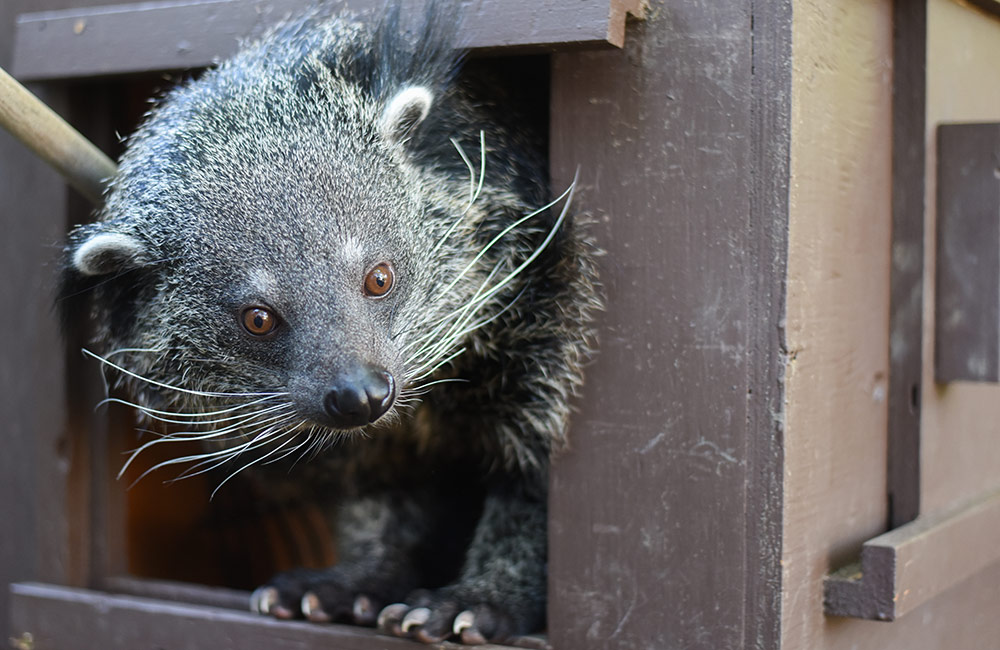Guardians of the Binturong: A Call to Action for Conservation
In the lush rainforests of Southeast Asia, a mystical creature roams the canopy with grace and mystery – the binturong. Known for its bear-like appearance and distinctive scent, the binturong has long captured the intrigue of both locals and wildlife enthusiasts. However, beyond its enchanting aura lies a pressing reality – the urgent need for conservation efforts to protect this unique species from the threats it faces in its natural habitat.
As we delve deeper into the world of binturongs, we uncover a narrative that intertwines their existence with the delicate balance of their ecosystems. Deforestation, habitat loss, and illegal wildlife trade loom as formidable challenges that continuously encroach upon the binturong's domain, pushing them towards the brink of endangerment. It becomes increasingly clear that the guardianship of the binturong – both in terms of awareness and action – is paramount in ensuring the survival of this enchanting arboreal species for generations to come.
Habitat and Behavior
The binturong, also known as the Asian bearcat, is a fascinating creature that thrives in the dense forests of Southeast Asia. Their preferred habitats include lush tropical rainforests with plenty of tall trees for climbing and large areas to explore. Binturongs are primarily nocturnal animals, which means they are most active during the night when they search for food and socialize with their fellow binturongs.

Known for their unique physical characteristics, binturongs have a distinctive smell that is often likened to popcorn or corn chips. This scent is produced by their scent glands and is used for communication with other binturongs in the area. In terms of behavior, binturongs are solitary creatures, except during mating season when males and females come together to reproduce. They are excellent climbers and spend much of their time high up in the trees, searching for fruits, eggs, small mammals, and birds to eat.
Conservation efforts are crucial to ensure the survival of these remarkable animals and protect their natural habitats. Deforestation, poaching, and the illegal pet trade are some of the main threats faced by binturongs today. By raising awareness about the importance of preserving the binturong and its habitat, we can work towards securing a brighter future for these majestic creatures.
Threats to Survival
The binturong faces a myriad of threats in its natural habitat, posing significant challenges to its survival. Deforestation, primarily driven by the expansion of agriculture and logging activities, has led to the loss of crucial forest cover for these arboreal creatures. As their home ranges diminish, binturongs are forced into smaller fragmented habitats, increasing their vulnerability to predators and human encroachment.
Additionally, illegal wildlife trade poses a grave threat to the population of binturongs. These elusive creatures are sought after for their unique physical characteristics and are often captured and sold in the exotic pet market or for their body parts. The relentless exploitation of binturongs for commercial gains has severely impacted their numbers, pushing them closer to the brink of extinction.
Furthermore, the lack of adequate protection measures and conservation efforts further exacerbates the plight of the binturong. Weak enforcement of wildlife laws and ineffective habitat management contribute to the continued decline of binturong populations. Without urgent intervention and concerted action, the future of these magnificent animals remains uncertain in the face of mounting threats to their survival.
Conservation Efforts
Conservation of the binturong involves a multi-faceted approach to ensure the long-term survival of this unique species. Wildlife organizations around the world are actively participating in conservation efforts to protect the binturong's natural habitats from deforestation and other threats. By collaborating with local communities and governments, these initiatives aim to implement sustainable practices that benefit both the binturong and the ecosystem as a whole.
One key aspect of conservation efforts is raising awareness about the importance of preserving the binturong and its habitat. Through educational programs, outreach activities, and media campaigns, conservationists are working to inform the public about the threats facing the binturong and the need for urgent action. By engaging people of all ages and backgrounds, these efforts seek to build a strong support base for conservation initiatives and encourage individuals to take an active role in protecting the binturong.
In addition to raising awareness, conservation organizations are also involved in research projects aimed at better understanding the behavior, ecology, and population dynamics of the binturong. By gathering valuable data and conducting field studies, scientists can develop effective conservation strategies that address the specific needs of this vulnerable species. Through ongoing research efforts, conservationists are able to adapt their approaches and collaborate with stakeholders to ensure the long-term survival of the binturong in the wild.